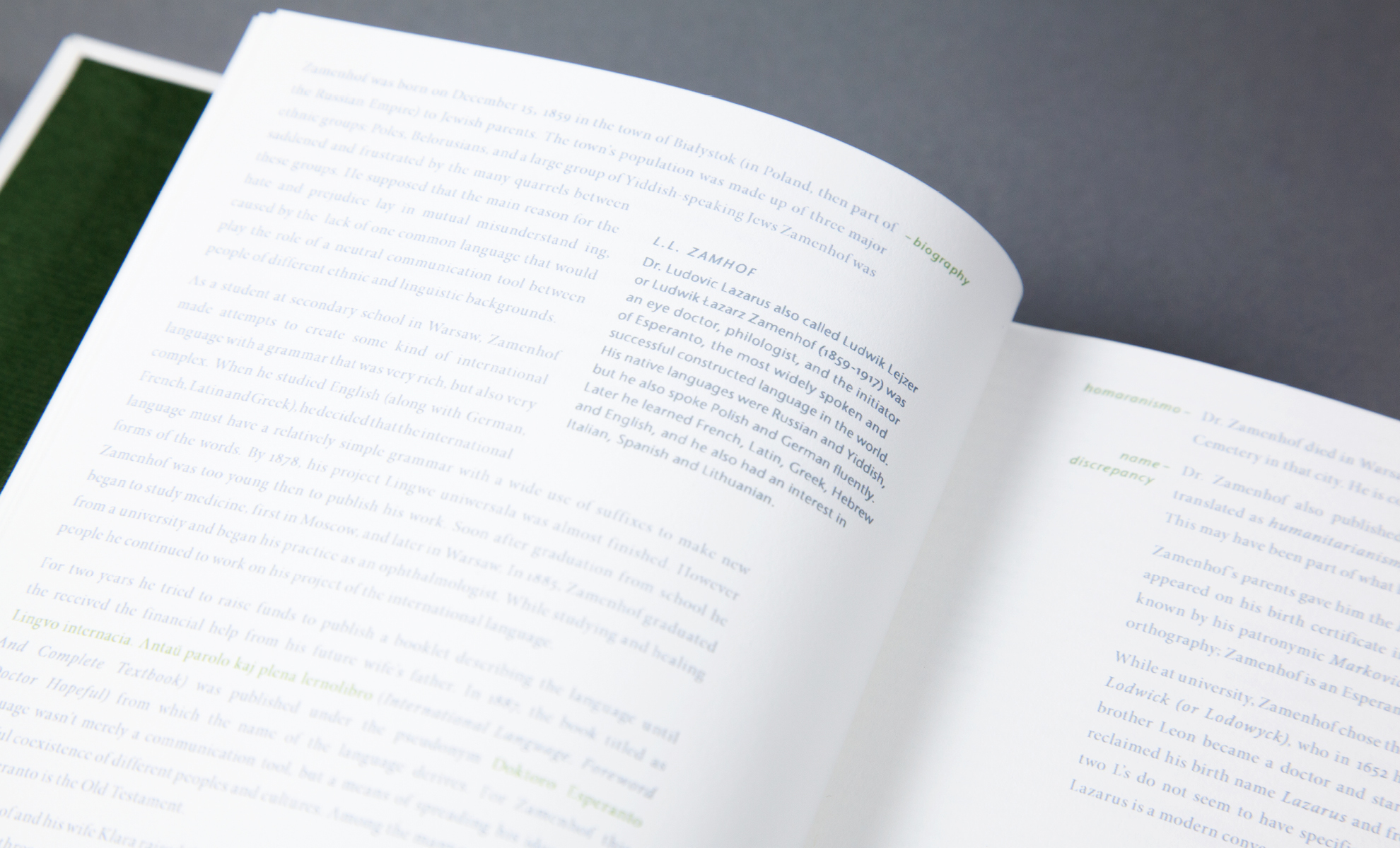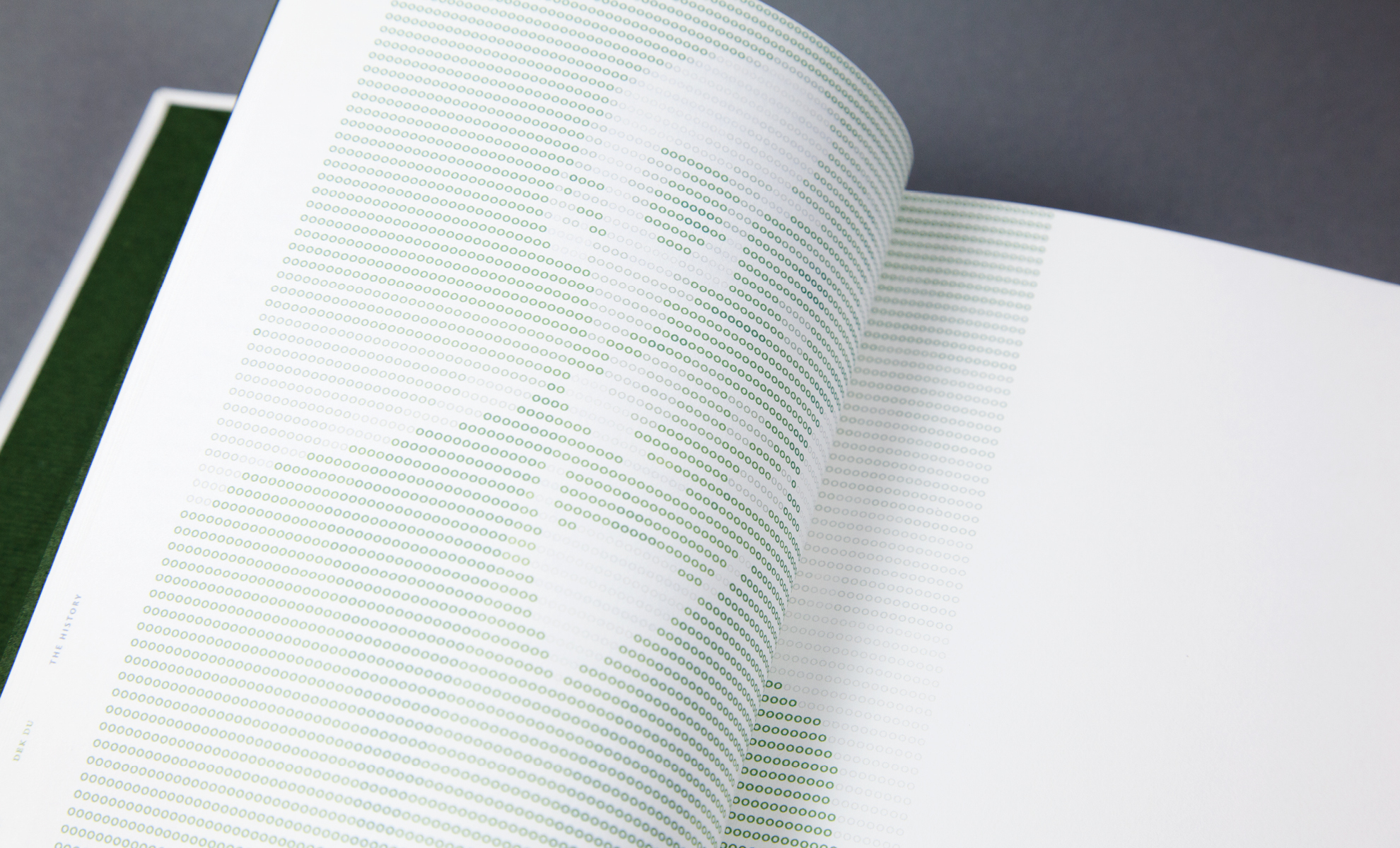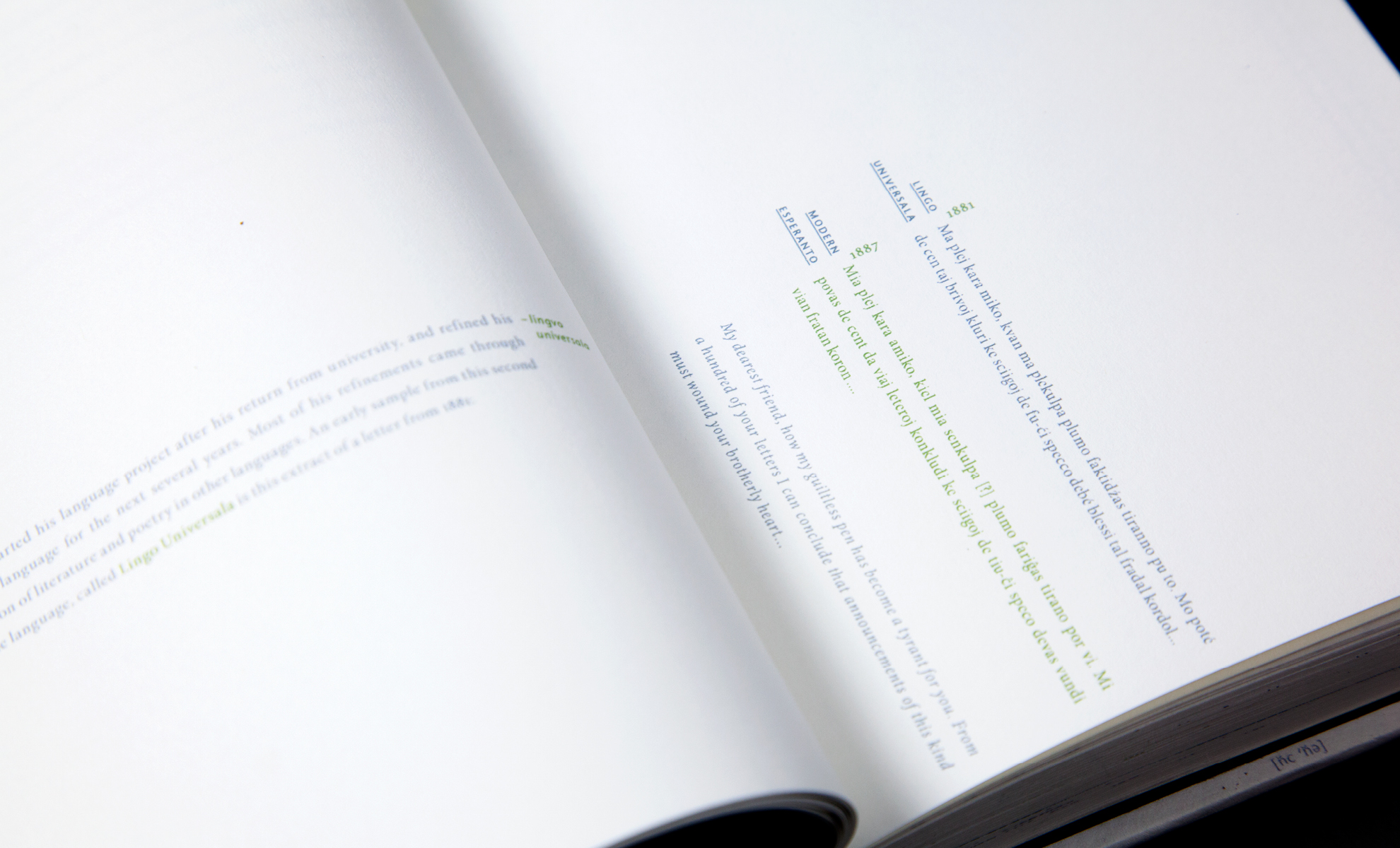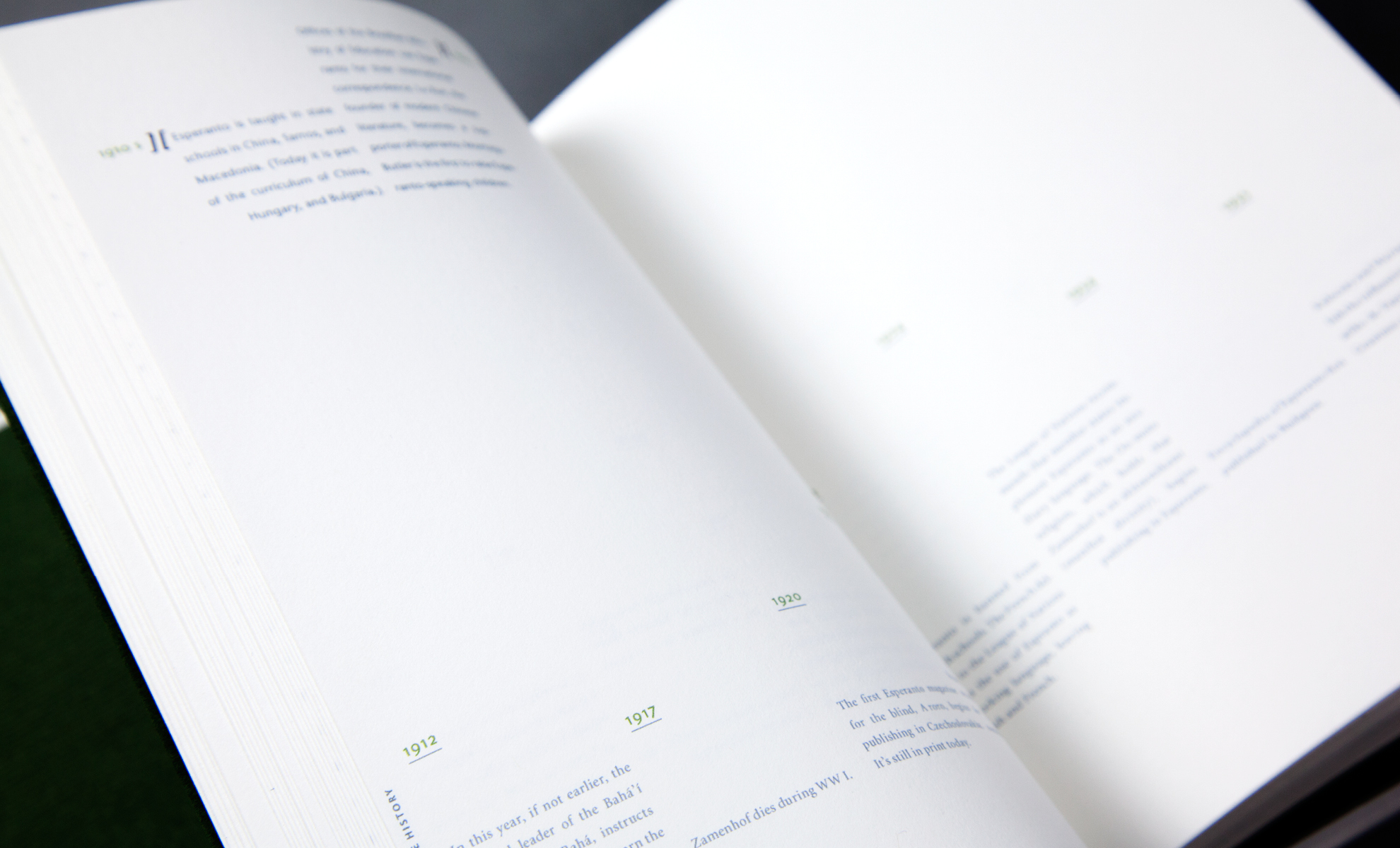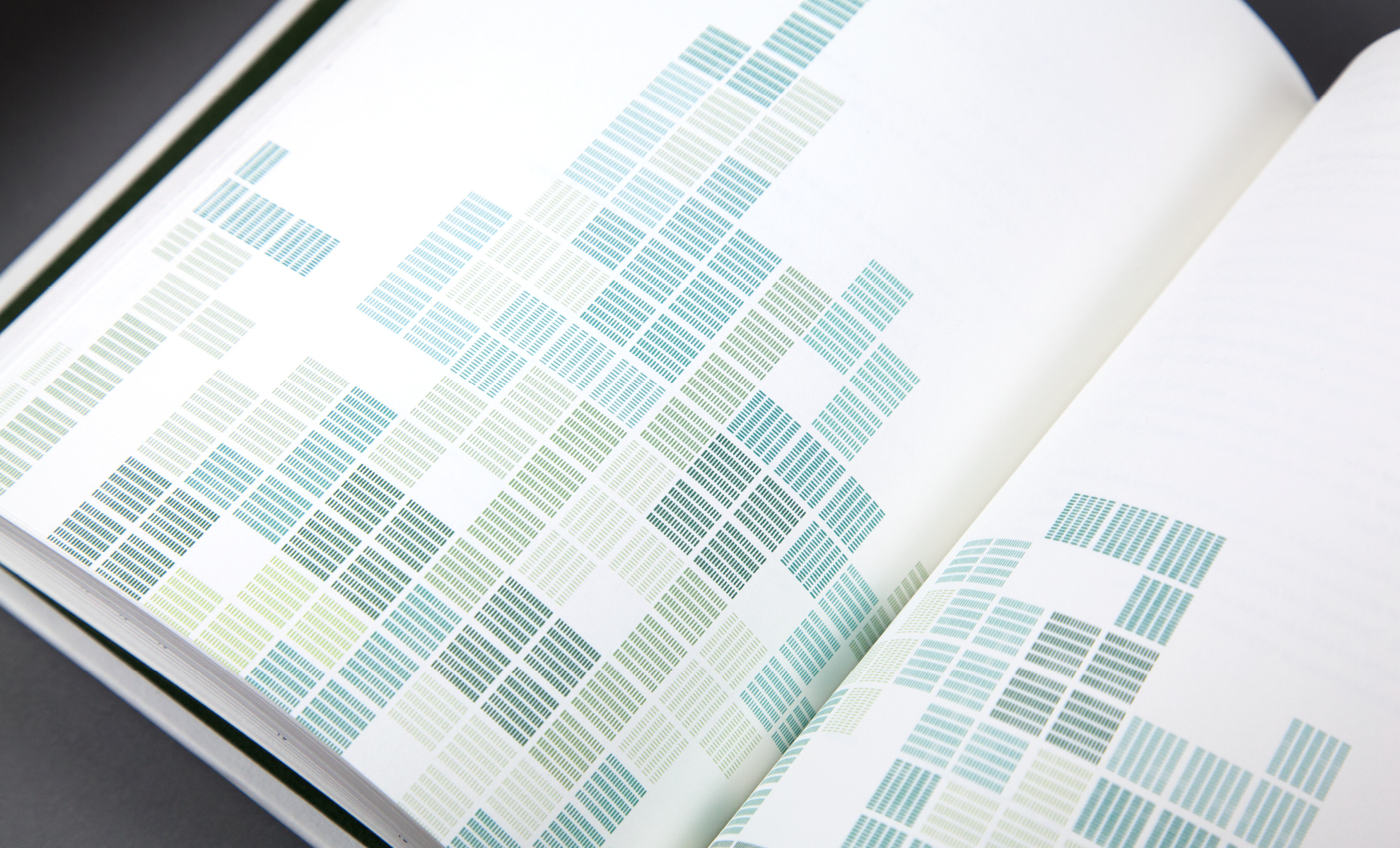top2025 © Studio Alpenglow | Imprint | Data Protection
Esperanto
Language barriers can sometimes make life difficult - even with excellent knowledge of a foreign language, misunderstandings can often arise. One attempt to overcome this obstacle and develop a common international language was “Esperanto”, created in 1887 by Ludwik Lejzer Zamenhof, a.k.a. “Doctor Esperanto”. Based on elements from various languages, this constructed language spread quickly in the 1920s. Today, Esperanto speakers live mainly in Europe, China, Japan and Brazil.
The book “Esperanto” outlines the rules and composition of the language, as well as the context of its emergence. The visual concept is based on the transient nature of the spoken word; that what has been said cannot be taken back or changed.
The illustrations of the book are based on the linchpin of the alphabet – the letter. Just as the language of Esperanto is built of individual language components, so the illustrations are formed from letters. This clear structure grants the book a general insight into the history and foundation of Esperanto.




